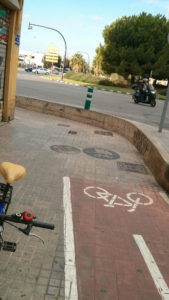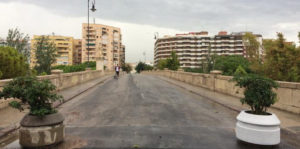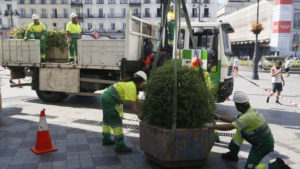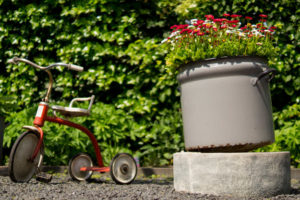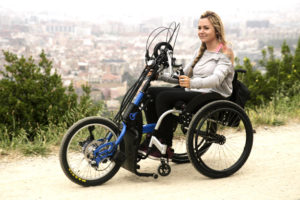Continuing with the neighboring fights, there are some that do not center on specific actions such as changing an avenue or buddying a railroad track. They look for a complete improvement in broader areas like the whole city. Given the dimension of the target, multiple actions are needed. In this second post on this topic, I am going to talk about Valencia camina (Valencia walks) and the 8-80 platform in Pamplona.
Valencia camina (http://arquitecturia.org/valenciacamina , in Spanish) was born in February 2018 as a shout from pedestrians against what negatively interfere in the day-to-day movements. You know, lots of architectural barriers, crosses with poor visibility, nonsense routes (for example the need to go from point A to point B in a straight line instead of walking in a U because of the bad urban development), etc. They claim for more safety, universal accessibility, school paths, zero vision (zero accidents), walking paths quality, streets with vegetables, noise control, pollution control, secure road surface, bus stops according to the pedestrian paths, etc. They collaborate to the European FLOW project (Furthering Less Congestion by Creating Opportunities For More Walking and Cycling) with the aim of putting walking and biking on the fair base with the motor-based ways of transport as a solution to jam among others (http://h2020-flow.eu/about/overview/). In a few words, they look for a more human city.
Similarly as above, the 8/80 platform in Pamplona started as a group of people demanding improvements in their lives. They have criticized laws which discriminate the use of bicycle or worsen pedestrian walkings. Furthermore, they publish a piece of news every time a pedestrian is killed in a car accident, denounce dangerous crossings and support bike vindications. This movement was imported from Canada (https://www.880cities.org) with the goal of improving the quality of life for people by bringing citizens together to enhance mobility and public space so that together can be created more vibrant, healthy and equitable communities.
